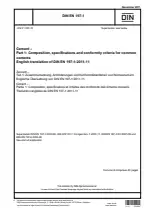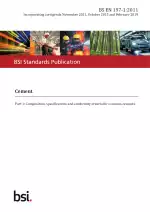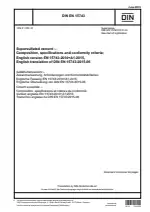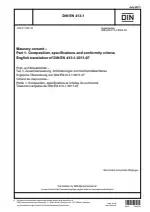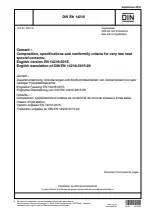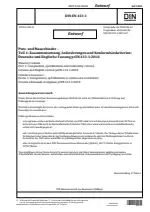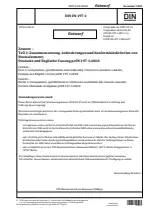Cement - Part 1: Composition, specifications, and conformity criteria for common cements
Also Known As:
The DIN EN 197-1 standard outlines the requirements for various types of common cements used in construction. It specifies the composition and proportions of constituents for 27 different common cements, 7 sulfate resisting common cements, 3 low early strength blast furnace cements, and 2 sulfate resisting low early strength blast furnace cements. These defined cements belong to a range of nine strength classes.
The standard also includes mechanical, physical, and chemical requirements that the constituents must meet in order to ensure the desired properties of the cements. Durability requirements are given to ensure the long-term performance of the cement products.
Furthermore, the standard provides conformity criteria and related rules, which specify the requirements for testing, performance evaluation, and quality control of the cements to ensure their compliance with the standard. Additionally, the standard recognizes that other cements conforming to this standard or other European or national standards may also have sulfate resisting properties, as demonstrated by different CEN Member countries. These additional cements are listed in Annex A of the standard.
| Descriptors | Building lime, CE marking, Cements, Certificates of conformity, Certification (approval), Chemical composition, Chemical properties, Components, Composition, Conformity, Conformity testing, Construction, Construction materials, Constructional products, Definitions, Designations, Durability, Heat of hydration, Main constituents, Marking, Mass concentration, Mechanical properties, Mechanical testing, Physical properties, Properties, Scope, Specification, Specification (approval), Strength of materials, Symbols, Testing, Ingredients, Permanency |
| ICS Codes | 91.100.10 - Cement. Gypsum. Lime. Mortar |
| Language(s) | English |
| File Size | 450.6 KB |

